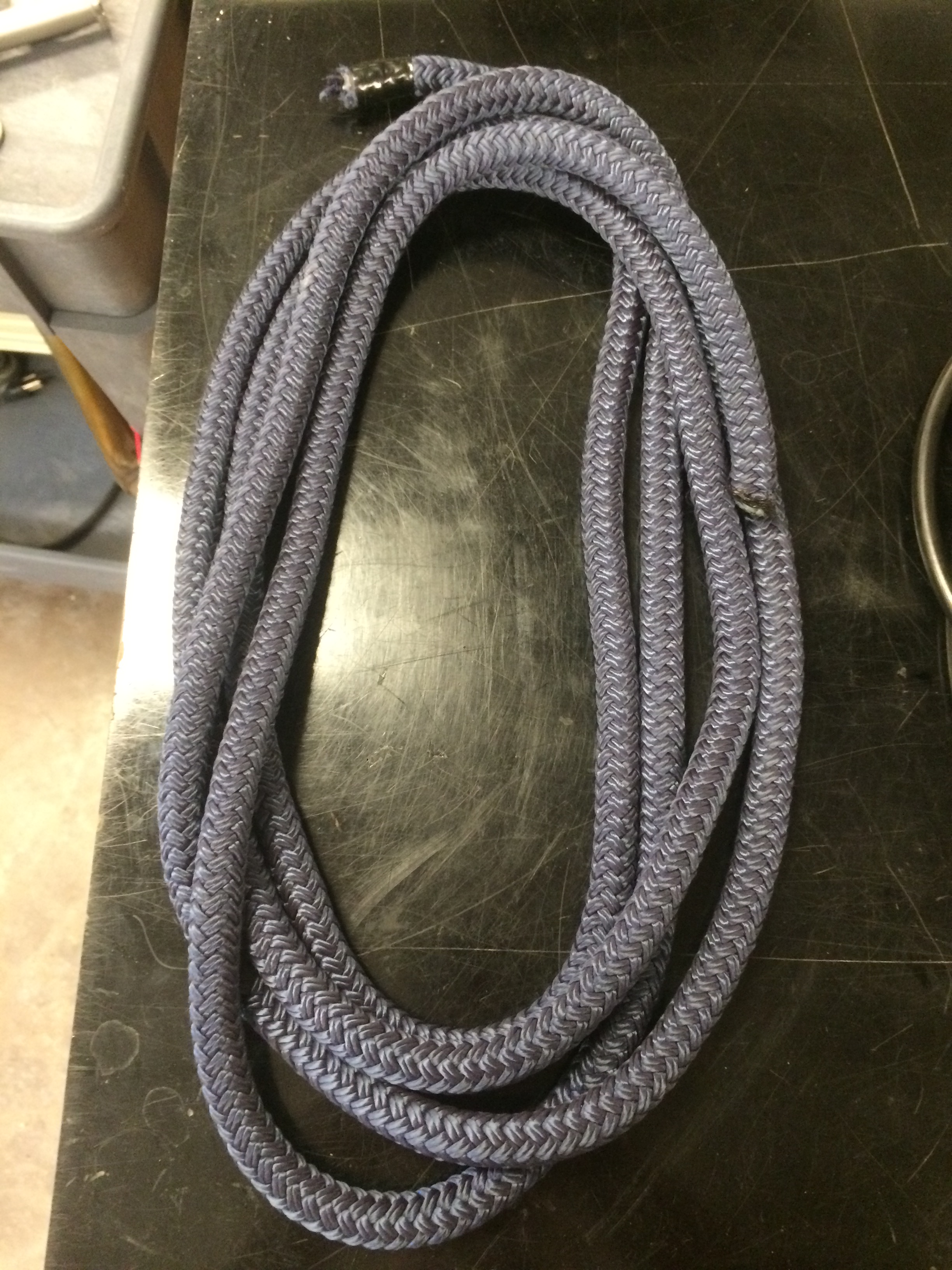
Blue Rope, linear density (LD) = 1.02g/cm
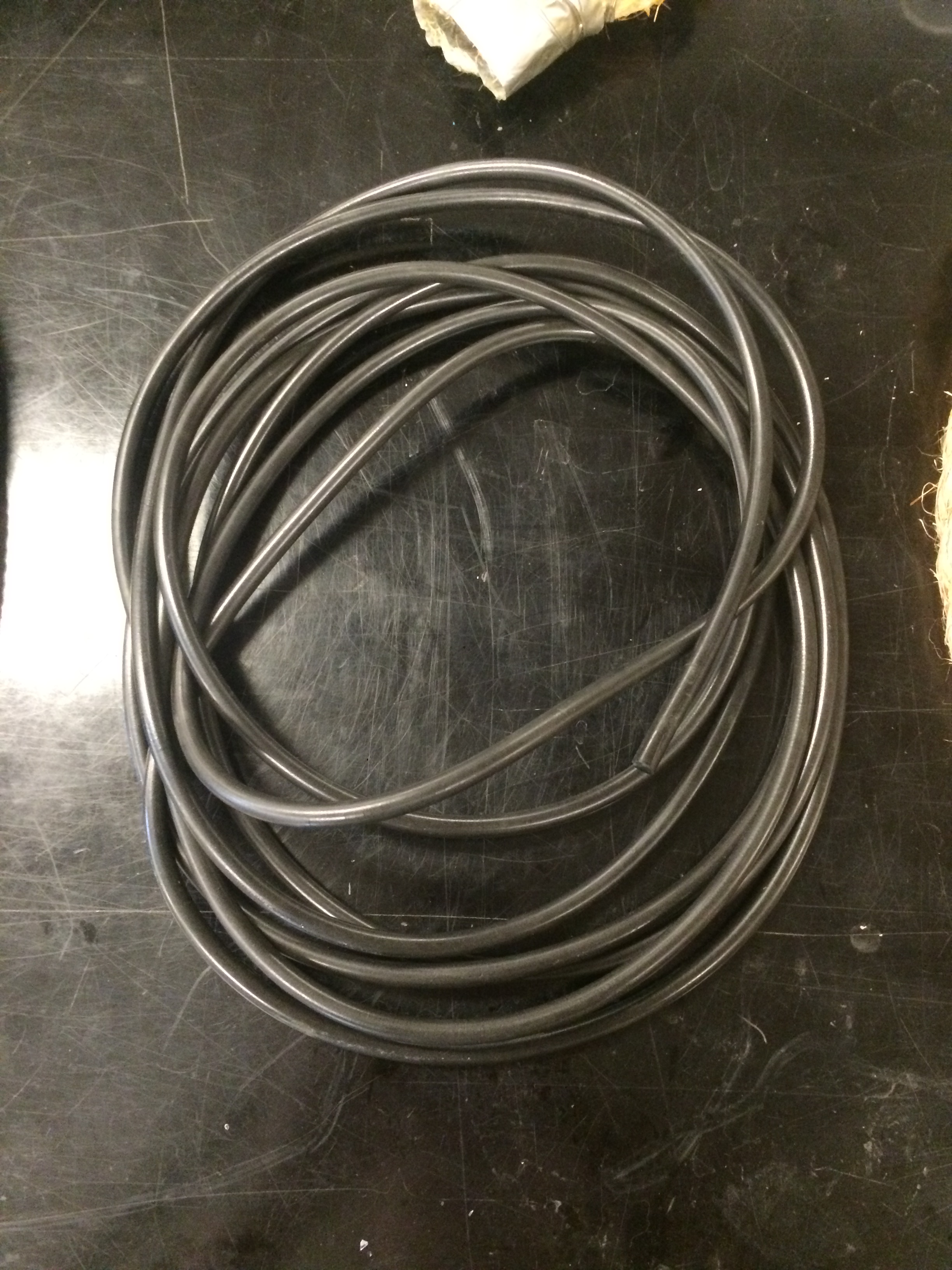
Black Rope, LD = 0.519 g/cm
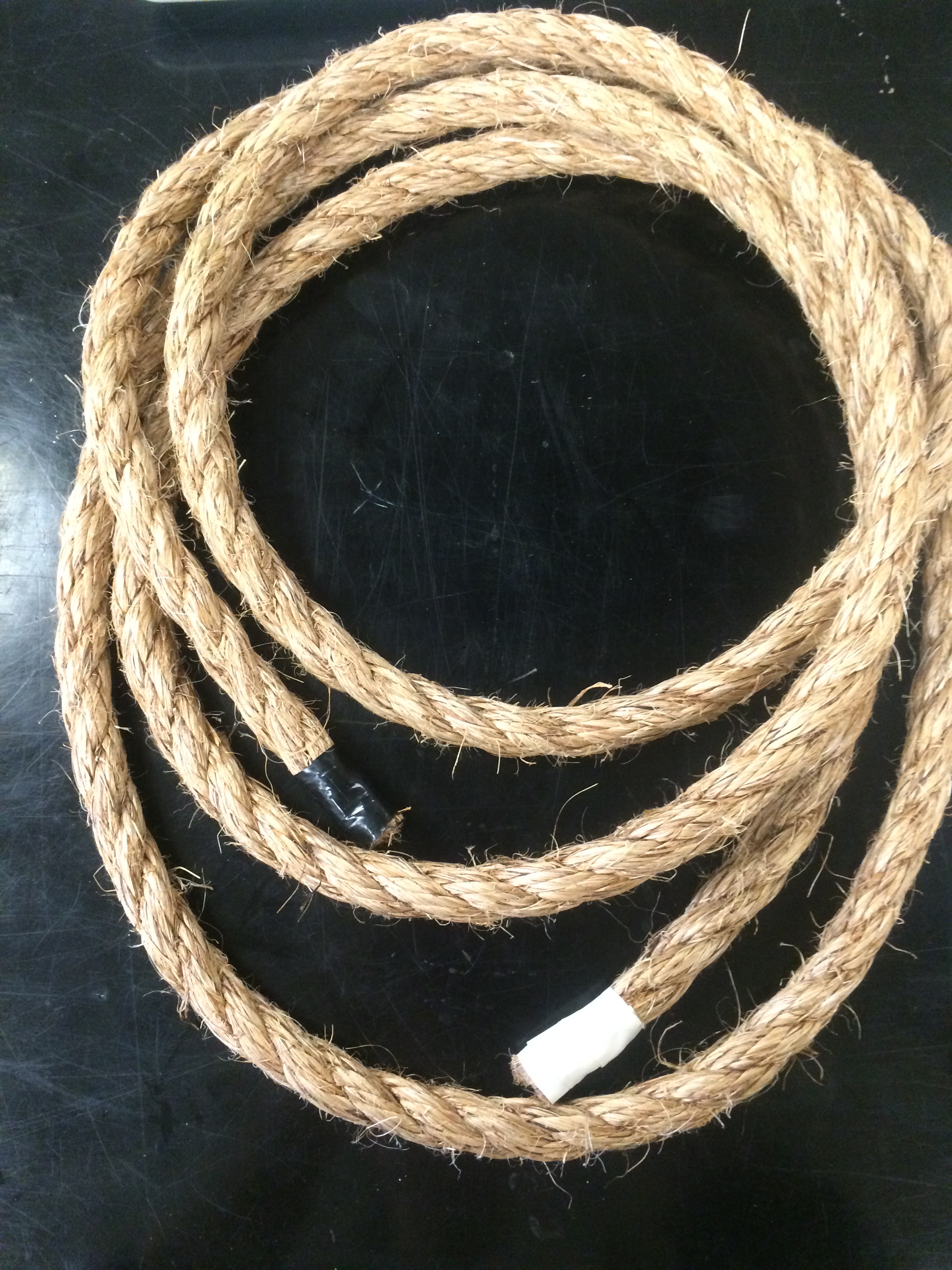
Small Brown Rope, LD = 1.43 g/cm
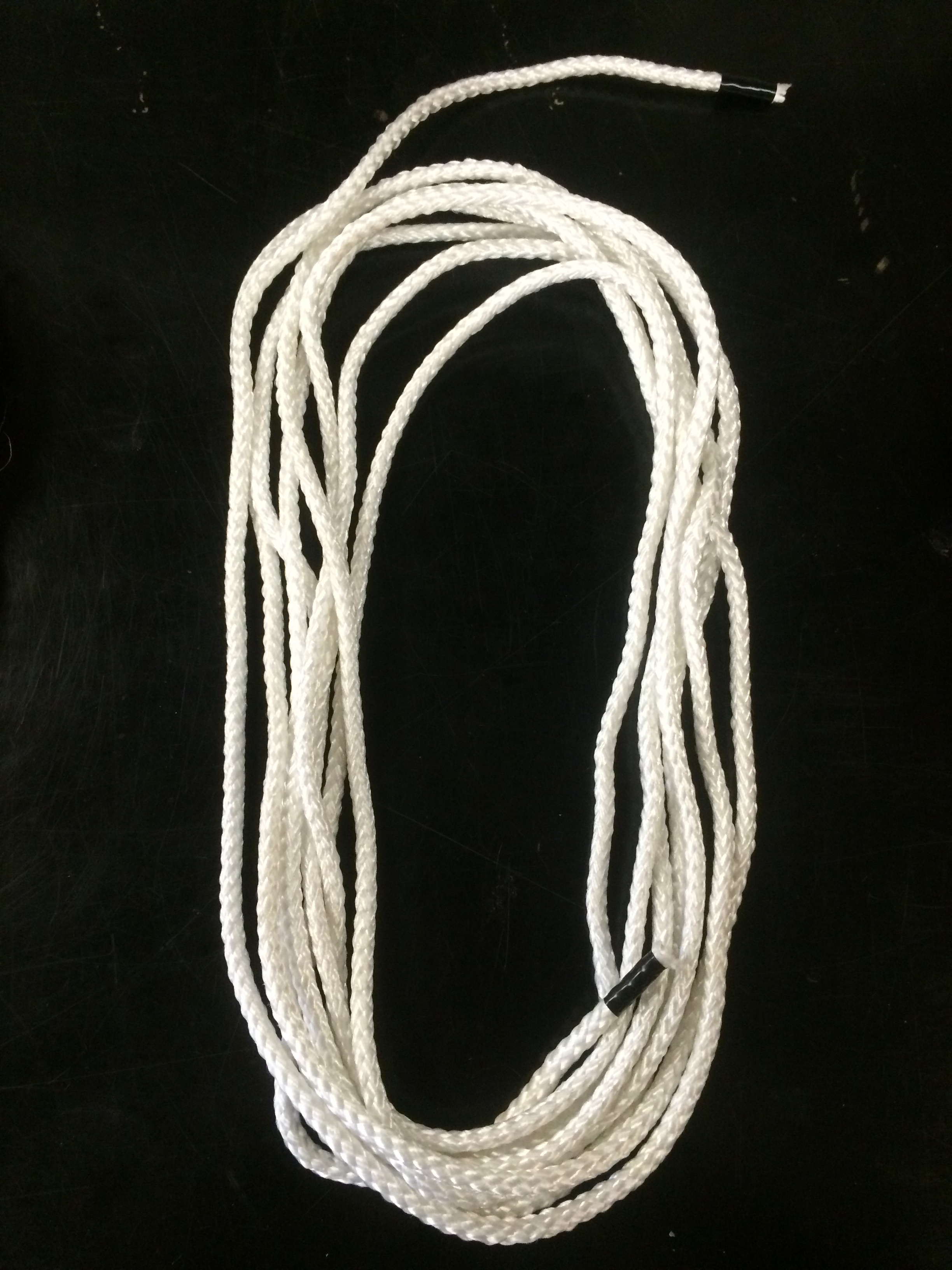
White Rope, LD = 0.162 g/cm
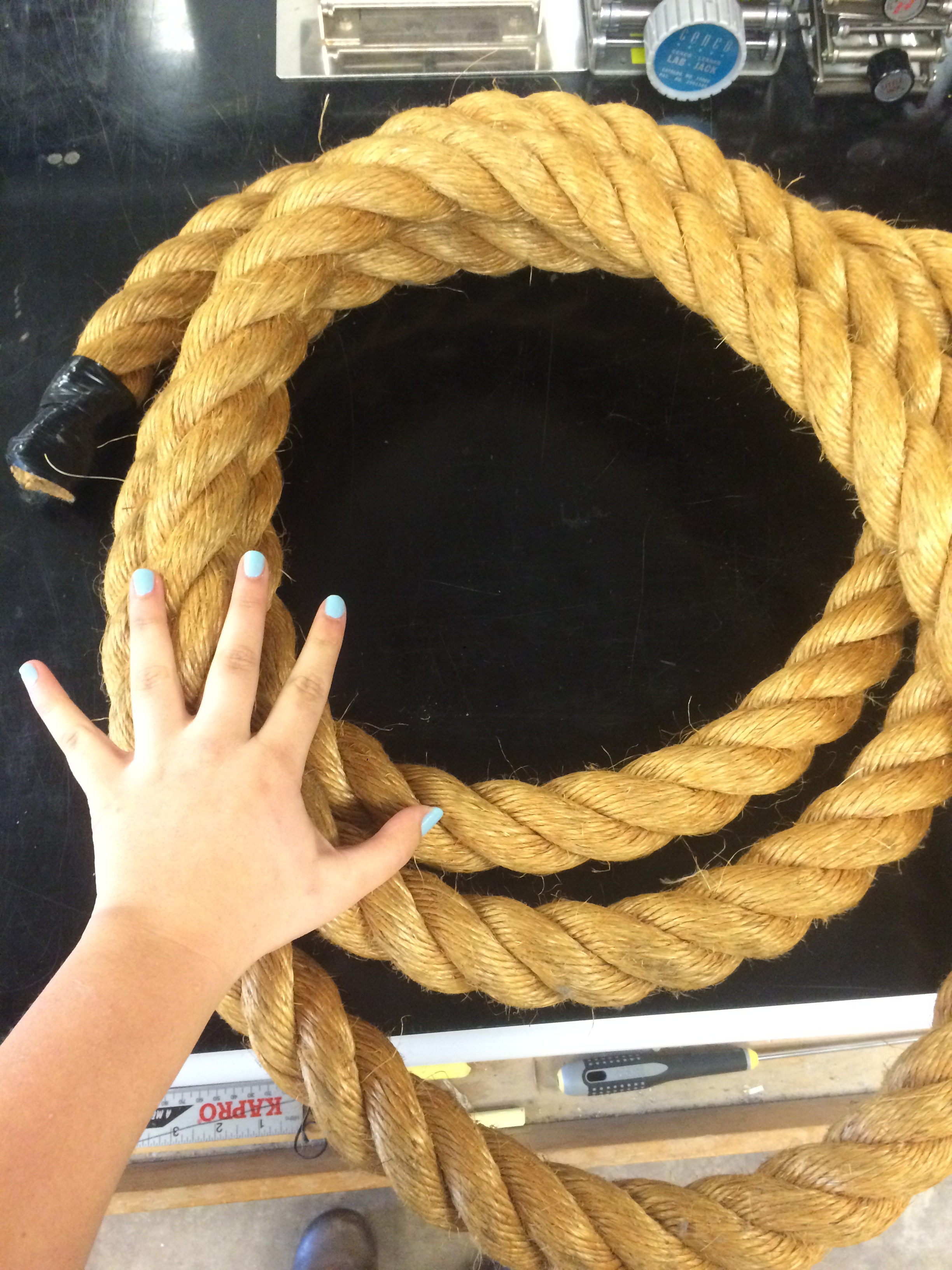
Large Brown Rope, LD = 6.24 g/cm
Demo:
The purpose of this demo is to show students how waves travel differently through ropes of different thicknesses and weights.
Some possible demos:
- Have two students hold either end of the ropes at various tensions, and have them send a wave down the rope to see how tension makes a wave go faster or slower.
- Have students send a wave down a rope that is laying on the ground compared to sending a wave down the rope when the end is held by another student to see the reflection in the wave that is held at the opposing end.
- Have two students holding each end of two different ropes and have one send a wave down both at the same time to see differences in velocities.
- Have two students holding each end of one rope and have them try to make a sinusoidal wave with stationary nodes and antinodes.
Materials:
Ropes of different weights (e.g. thick natural fiber rope, thinner hollow tubing, lightweight cotton rope or string.
Explanation:
You will see waves travel at different speeds through the rope depending on the tension and linear density of the rope. A helpful visualization to show in class can be found here.
This explanation will be separated into two parts, explaining how the linear density and tension of the rope change the velocity of the wave created.
The speed of a wave in a string is modeled by the equation:
v = √(T/μ)
v = velocity of the wave, T = tension of the string, μ = the linear density of the rope
First, however, we need to know what makes a wave travel faster or slower on a string in the most general terms. A wave is nothing more than a displacement of the string from its equilibrium position along a line; the wave velocity is commonly thought of as the speed with which a pulse travels along the string. How fast the string returns to that equilibrium position can also be referred to as the speed of the wave. The faster a string returns to its equilibrium position, the faster the wave travels. Conversely, the slower a string returns to its equilibrium position, the slower the wave travels. We know that in order for an object to move, there must be a force applied to it, and that force should be contained within the string (because there isn’t some outside actor pushing and pulling the string along its length to create a wave). We can see from this explanation that the speed that the string returns to its equilibrium shouldn’t be dependent on how many waves you make in a row (frequency) or how large (amplitude) the waves are themselves. The only things that should affect the speed of the waves are the properties of the rope or string itself.
When a guitar string is plucked, it springs back to its equilibrium position with a certain restoring force. That guitar string will bounce back to its original position fairly quickly because there is a large restoring force acting on it. However, if we have a loose string on a table in front of us and move it from its equilibrium position, it won’t suddenly spring back to its original position. There must be some force added on a taught string that acts as a force to return the string to the equilibrium position.
Tension (T):
The equation for the speed of a wave on a string tells us that velocity varies monotonically with the tension present in the string. This means that as the tension increases (the rope becomes tighter), the velocity will increase. Similarly, as the tension decreases (as the rope loosens), the wave will travel more slowly.
This is because the tension is what creates the restoring force for the string to return to the original position. As the string is displaced, the tension acts along the length of the string. Because this is at an angle with respect to the equilibrium position, there is a force acting both parallel to the line of equilibrium and a force acting perpendicular to the line of equilibrium, which is what brings the string down from its displaced position.
It is easy to see how a greater tension force on the string will create a larger restoring force which acts to bring the wave back to equilibrium. What is not obvious to see is why the amplitude of the wave doesn’t affect the speed of the wave. If you pull the string farther from the equilibrium position, creating a bigger angle with the horizontal, there is a larger perpendicular force that should bring the string back to equilibrium faster. This can be thought of as a corollary to Hooke’s Law (F = -kΔx) — the further from equilibrium the string is pulled, the stronger the restoring force.
The greater restoring force created by an additional displacement is counter acted by the additional distance that the string has to cover to return to equilibrium. The practical effect of this is that the amplitude and frequency of the wave do not play any role in the speed of the wave itself.
Linear Density (μ):
The linear density of a rope is just the mass per unit length of the rope that you are using. From the equation above we can see that the velocity of the wave varies inversely with the density of the rope. This means that as the linear density increases, the velocity of the wave will decrease. Similarly, as the linear density decreases, the velocity will increase.
Greater linear density will slow down the speed of the wave. If we think of the speed of a wave as nothing more than the time it takes for differential segments to return to an equilibrium position, it is clear that the mass of each of those segments will have an effect on how fast the piece can accelerate with a given force. If the rope has a high linear density it will tend to oppose a change in motion (have more inertia) than a rope with a low linear density, simply because more massive objects have higher inertia. Imagine two ropes that are subject to equal tensions and equal displacements but have different linear densities, the restoring force acting on them will be the same (this is due just because of the tension force experienced). However, the heavier rope will resist the change on motion more than the lighter rope. This means that the heavier rope will return to equilibrium more slowly, and thus the wave will move more slowly.
Written by: Sophia Sholtz